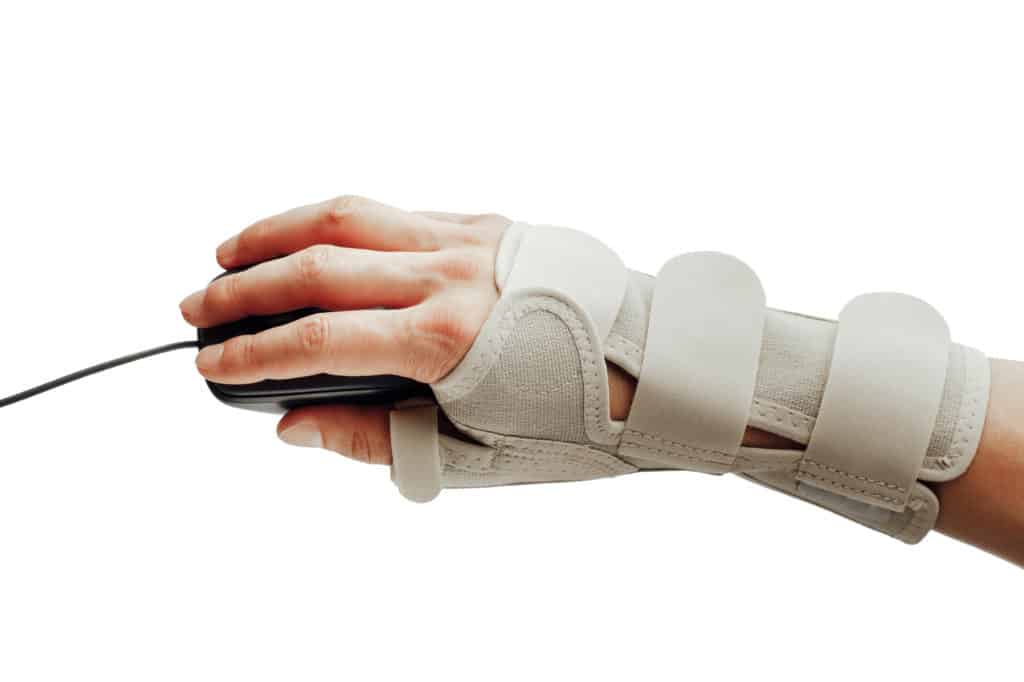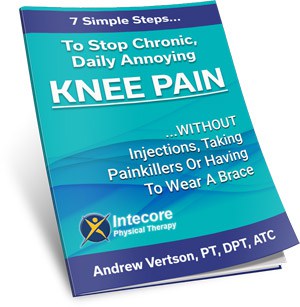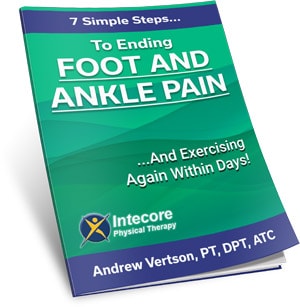
Do you have numbness or “pins and needles” in your hands and fingers?
Carpal tunnel syndrome is a condition that causes annoying and painful numbness and tingling in the hands, fingers, and wrist. It’s a minor condition that often goes away independently (although it can take months to get fully better).
But in severe cases (if you don’t find and fix the root cause), Carpal Tunnel Syndrome can stick around and become disabling if your thumb or other fingers become weak and prevent you from gripping things properly.
However, the good news is that there are many different ways to treat the symptoms of Carpal Tunnel Syndrome – without having to resort to surgery to fix it.
We just need to find the one that works for you and your specific symptoms because there can be many different underlying causes and, therefore, many different treatment strategies.
There are varying degrees of carpal tunnel syndrome, ranging from mild to severe.
But in most cases, the symptoms tend to progress and worsen with time – starting mild (almost unnoticeable) and slowly progressing to severe and all-consuming over months/years.
The key is early intervention and getting treatment at the first signs of the tell-tale numbness and/or tingling to stop t in its track and stop it from progressing to the more severe form of the condition.
In the early stages of the condition, physical therapy and more conservative treatments like wrist braces can correct Carpal Tunnel Syndrome and eliminate the symptoms.
Still, surgery may become your only option if you ignore the early symptoms and allow the condition to progress so if you’ve had the symptoms of carpal tunnel syndrome for over a week already.
We urge you to book a consultation with a physical therapist and immediately start corrective treatment.
That way, you can avoid going under the knife.
More Blogs From Intecore Physical Therapy:
Should I Be Worried About My Daily Neck Pain?
What Is Knee Kinesiology, And How Can It Help?
What Causes Carpal Tunnel Syndrome?
Well, first, you need to understand what “carpal tunnel” is.
We won’t bore you with scientific descriptions of the anatomical structures because they’re irrelevant when all you want to do is fix the pain.
But in simple terms, the four carpal bones and the muscles, tendons, and ligaments group together to form a “tunnel” inside your wrist.
The most basic description of what causes carpal tunnel syndrome is “pressure on the median nerve” – the nerve that runs the entire length of your arm, originating at the top of the shoulder beginning at the “branchial plexus” (network of nerves).
This nerve controls movement and sensory function in the wrist, forearm, and fingers.
However, the exact cause of that pressure on the median nerve could be any number of things, so it’s essential to get a professional evaluation and diagnosis if you suspect you might have carpal tunnel syndrome.
The cause of the pressure on the median nerve could be a result of:
Arthritis
Arthritis is an inflammatory condition, particularly in the case of Rheumatoid Arthritis, which can mean that if you have arthritis, you have a higher risk of also getting carpal tunnel syndrome – due to the associated inflammation and pressure on the nerve.
A Broken Bone, Fracture, Sprain, Or Dislocation Anywhere In The Arm
As you can imagine, any of these issues can result in additional pressure on the median nerve – either from acute inflammation, scar tissue, or long-term injury-related adaptations to the internal structures inside the wrist.
Swelling/inflammation
When there is chronic inflammation and/or swelling (edema) in the wrist, shoulder, or elsewhere in the arm because of an injury or underlying medical condition, it can put additional pressure on and compress your median nerve.
Obesity
When you carry excess weight, you also carry excess fluid, which can accumulate around the wrist and press on the median nerve, which results in carpal tunnel syndrome.
Overuse/Wear & Tear
When you repeatedly hold your hands and wrists in awkward positions or make repetitive movements, it puts repetitive stress on the wrist joint and the internal structures, which over time can result in compression of the median nerve and the development of carpal tunnel syndrome.
How To Fix Carpal Tunnel Syndrome
At Home
The appropriate treatment for carpal tunnel syndrome depends on the severity of your symptoms, the underlying cause, and the length of time you have had the symptoms.
You can treat it conservatively at home, but we would only recommend this strategy if your symptoms are mild and you haven’t had the condition for a long time.
But if you want to try treating the condition at home, use an ice pack or soak your wrist in cold water to try and reduce swelling and inflammation.
However, some people prefer to use heat to get more flexibility in the wrist. It doesn’t matter which one you choose.
Try the one that works best for you. Repeat the process a couple of times per day.
However, only do it for a maximum of ten to fifteen minutes. If the pain keeps you awake at night, gently massage around the forearm, hands, and fingers, or let your hand relax and hang off the bed.
In our opinion, if any pain keeps you up at night, you need to see a physical therapist.
Other things to try when your symptoms are mild are:
Over-The-Counter Medication
Can help if your symptoms are mild. They can temporarily reduce inflammation and swelling to allow your wrist to heal.
But we do not recommend that you take them for more than three days at a time. Consult a physical therapist instead.
Yoga
There is some evidence to suggest that regular yoga and other stretching and mobility exercises can help to reduce the symptoms of carpal tunnel syndrome.
But we recommend you have your wrists evaluated by a physical therapist before commencing any new exercise routine.
Your symptoms may be caused by something different altogether that could worsen with exercise.
Resting
Rest as much as possible, and stop doing the things that trigger your symptoms. It might be typing on a keyboard or writing with a pen. If you can, give yourself some time to heal.
Surgery For Carpal Tunnel Syndrome
If your symptoms don’t improve after six months (which is highly unlikely with physical therapy), you may need a “carpal tunnel release” surgery to free up the median nerve and reduce pain and other symptoms.
There are two types of surgery to fix carpal tunnel syndrome that is performed slightly differently. But in both types, the surgeon snips a ligament to reduce the pressure on the nerve.
As a result, it will eventually grow back without pressure on the median nerve.
However, if you act early and seek treatment for your carpal tunnel symptoms, you should never have to consider surgery.
At Your Physical Therapists Office
Physical therapy is the best way to treat and prevent carpal tunnel syndrome.
When you come to see us with the symptoms of carpal tunnel syndrome, we perform a full physical evaluation to find the root cause. Once we know the cause for you, we can help in various ways.
These interventions include specific therapeutic exercises to strengthen and stretch out the muscles and other structures inside your wrists and other associated areas of your body that could contribute to the condition, such as the hands, fingers, shoulders, and arms.
In certain situations – with mild to moderate symptoms, we may recommend wearing a wrist brace for up to four weeks to give your wrist a better chance of healing by reducing pressure on the median nerve.
One of the most helpful times to wear a wrist brace is while you sleep because we tend to bend our wrists when we sleep without even realizing it.
This bending can worsen your symptoms, so it can be helpful to prevent it with a wrist brace.
Another helpful time to wear a wrist brace is if you are forced to use/put pressure on your wrists for work.
We also help you adapt your lifestyle and work environment to prevent stress on your median nerve.
The stress that causes the symptoms of carpal tunnel syndrome, so you can prevent any reoccurrence of the condition. These changes may include the following:
- Making a conscious effort not to hold your hands in awkward positions
- Keeping your wrist straight as much as possible to prevent nerve compression.
- Taking regular breaks at work to prevent stress on your wrists
- Stretching your wrists at regular intervals
- Changing your work setup to prevent wrist strain and nerve compression
- Trying not to “bang” your keyboard or grip other work-related tools too tightly
- Always maintain a good posture because how you hold your shoulders can affect the pressure on your hands and wrists.
Time To Act
Here at Intecore Physical Therapy our specialist team of Physical Therapists would be happy to help you on your road to recovery.
We want to get you back to your best, living your life pain free.
Click here to book your FREE 20 minute discovery session with one of our Physical Therapists.
In this session you’ll get a taster of what physical therapy is like and leave knowing what is wrong and how we can help you.
We look forward to welcoming you into one of our clinics in the near future.
- 7 Ways to Get Rid of Tension Headaches Naturally - July 1, 2025
- Why Are My Feet Swollen? Common Causes Explained - June 2, 2025
- What Is Restless Leg Syndrome? Symptoms, Causes, and Relief Options - May 5, 2025

















